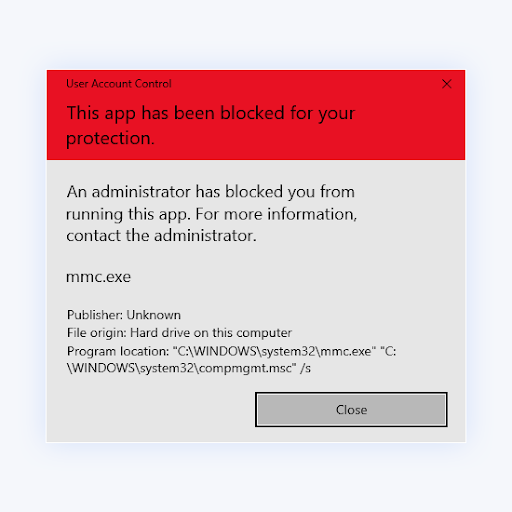Microsoft Edge Won’t Open in Windows 10: How To Fix

What to do if Microsoft Edge isn't working
This post is for users who are having trouble opening Microsoft Edge. If you have been using your computer and all of a sudden, the browser won’t open, don't panic! The article will help you fix this issue in no time.
When Microsoft Edge won't open, it's a frustrating experience. Microsoft Edge is the default web browser on Windows 10 (and made its way into Windows 11 as well) and is supposed to be fast and secure. But when Microsoft Edge fails to start, you may have no choice but to use another browser or troubleshoot the problem yourself.
In this article, we'll show you how to fix Microsoft Edge when it doesn't open so that you can get back online quickly!
what do you if Microsoft Edge isn't working:
Make sure that your browser is closed and that you have administrative rights to your device. If multiple users are logged in your device, make sure Microsoft Edge is closed for all users. Go to Start > Settings > Apps > Apps & features. In the apps list, select Microsoft Edge and then select Modify.
Let's discuss this in detail:
Microsoft Edge not opening: Common Microsoft Edge Problems
There are some different possible causes that may lead to Microsoft Edge not opening, and other errors regarding the browser. Let's take a look at the Microsoft Edge, not opening symptoms and some of the possible reasons for this:
- Microsoft Edge won't open if its files are missing or damaged, which can be fixed by updating or reinstalling the browser.
- Errors that indicate Microsoft Edge might be down or crashed. This error causes Microsoft Edge to not work properly, or has stopped responding to user actions.
- If you installed a harmful extension, it could prevent you from opening and using Microsoft Edge. Removing this extension should fix the problem.
- On rare occasions, your antivirus application may be blocking Microsoft Edge from opening. This happens if the program detects your browser as a "false positive" for malware.
The symptoms above should help you identify what might be causing the Microsoft Edge won't open error. Below, we detail how to fix Microsoft Edge when it won't open on a Windows computer.
Solved: Cannot open Edge in Windows 10
Find out what causes this problem and apply one of our solutions to troubleshoot Microsoft Edge. You'll find step-by-step instructions in the guide below:
Method 1. Restart your computer
A common way to overcome this problem is by restarting your computer.If you haven’t already tried to do that, now is the time to reboot your device.
- Click on the Windows icon in the bottom-left of your screen to bring up the Start menu.
- Click on the Power option, and then choose Restart. This is going to close all of your open applications and completely restart your computer.
After restarting, check if you’re able to watch YouTube without the Audio renderer error showing up on a blank video. If you’re still experiencing the problem, don’t worry — we’ve got many more things for you to try.
Method 2. Scan your device for malware
To fix Microsoft Edge, scan your computer for possible malware infection. You can use the built-in Windows Defender app or a third party software to do so.
We recommend scanning your computer to make sure that it does not have any viruses. To scan, we’ll use the Windows Defender built-in program, but a different third-party software may work better.
- Open the search bar in your taskbar by clicking on the magnifying glass icon. You can also bring it up with the Windows + S keyboard shortcut.
- Type in Windows Security and launch it from the search results.
- Switch to the Virus & Threat Protection tab using the home screen or the menu in the left-side pane. Click on the Scan Options link.
- Select the Full scan option. This is going to check every single file on all of your drives to ensure no threats can hide. Take note that this scan may last over 1-2 hours, depending on how many files you have on your system.
- Click on the Scan now button to begin the scan. If a threat is detected, Windows 10 will automatically quarantine or remove it entirely. You can review the scan results afterwards.
Method 3. Update third-party antivirus
If you are currently using a third-party antivirus application, it is recommended that the program be updated to avoid Microsoft Edge problems.
Because most antivirus applications have different layouts and functionality, you need to find updates on your own. Most apps will alert you when a new update is available, so make sure to check often! You can also head to the official website and find any news about updates there.
If you have automatic updates enabled, you’re most likely on the latest version already. But you can still check for updates using the application interface.
Method 4. Temporarily disable your antivirus app
Antivirus applications can block some apps and services from running. You can test if the antivirus you’re using at the moment is causing Microsoft Edge problems by disabling it.
- Right-click on an empty space in your taskbar and choose Task Manager from the context menu.
- Switch to the Start-up tab using the header menu located at the top of the window. Here, find your antivirus application from the list and select it by clicking on it once.
- Click on the Disable button now visible in the bottom-right of the window. This will disable the application from launching when you start your device.
- Restart your computer and try opening Microsoft Edge.
Method 5. Delete corrupted Microsoft Edge files
When Microsoft Edge isn’t opening properly, you can suspect that some internal files are corrupt. If this is the case and your computer won’t let the browser open, deleting the problematic files should take care of it right away!
- Navigate to your AppData folder:
- Press the Windows + R keys on your keyboard to bring up the Run utility. Type in “C:\Users\Your username\AppData” without the quotation marks, and hit Enter. Make sure to replace “Your username” with your local account name.
- Alternatively, open the File Explorer with the Windows + E keyboard shortcut, and then navigate to This PC > C: > Users > Your username > AppData.
- Open the Local folder.
- Next, open the Packages folder and look for any subfolders related to Microsoft Edge. Select all of them while holding the Shift key, and then right-click and choose Delete from the context menu.
- After deleting the folders, restart your computer and then see if you’re able to open Microsoft Edge.
Method 6. Run a PowerShell command
With this simple PowerShell command, you can restore Microsoft Edge so that the browser will open again.
- Press the Windows + X keys on your keyboard at the same time, then click on Windows PowerShell (Admin). If you're using a local account that doesn't have administrator permissions, click here.
- Click “Yes” if you’re prompted by the User Account Control (UAC) screen. This will allow PowerShell to run with elevated permissions which may be required on your device.
- When the PowerShell window is open, copy and paste the following command, and then press Enter to execute it:
|
Get-AppXPackage -AllUsers | Foreach {Add-AppxPackage -DisableDevelopmentMode -Register "$($_.InstallLocation)AppXManifest.xml"} |
Wait for the command to finish processing. Once it’s complete, reboot your computer and see if Microsoft Edge launches without issues.
Method 7. Restart Microsoft Edge completely with a script
Sometimes, Microsoft Edge may have issues with opening if another instance is already open. To make sure the browser is completely closed, run this script and try opening it again.
- Open this page in any web browser to get the script needed for this method. Select the text then right-click anywhere on the page, and choose Copy from the context menu. Alternatively, use the Ctrl + C keyboard shortcut.
- After the script text is in your clipboard, open the Notepad application. Right-click on any empty space and choose Paste from the context menu. You can also use the Ctrl + V keyboard shortcut for this.
- Next, go to File > Save As… and select the All files (*.*) option from the drop-down menu. Choose where you want to save the file, name it Edge.bat and then click on the Save button.
- Navigate to where you saved the file, and then right-click on it and choose Run as administrator. Click Yes if prompted by the UAC to make sure the script is able to run on your device.
- After the script runs, check if you can open Microsoft Edge.
Method 8. Update Windows to the latest version
An update to your operating system may fix many underlying issues, such as the Microsoft Edge browser not opening. Download the latest version of Windows and see if the problem is fixed.
- Click on the Windows icon in the bottom left of your screen to bring up the Start menu. Choose Settings, or use the Windows + I shortcut.
- Click on the Update & Security tile. This is where you can find most of your Windows Update settings and choose when to receive updates.
- Make sure to stay on the default Windows Update tab. Click on the Check for updates option and wait for Windows to find available updates. If you see any updates displayed, click on the View all optional updates link to see and install them.
- When Windows finds a new update, click on the Install option. Wait for Windows to download and apply the necessary updates.
Method 9. Repair or reinstall Microsoft Edge
Windows has a built-in tool for repairing installed apps. If none of the solutions worked so far, try to remove Microsoft Edge from your computer and install a clean copy. Follow the steps below to completely remove your browser installation and residual files.
- Press the Windows + X keys at the same time, and then choose Apps and Features from the context menu.
- Locate Microsoft Edge, and then click on it. From the available options, click on the Modify button.
- Click the Repair button and wait for the software to detect and resolve any issues. This may take several minutes depending on your configuration.
- When the repair process is complete, try to launch Microsoft Edge.
- To reinstall the app, head to the Microsoft Edge download page and get the latest version of the browser compatible with your system. Wait for the installer to download before launching the file and following the on-screen instructions.
Watch: Microsoft Edge Won't Open in Windows 10 Video
Final thoughts
And that’s it. You can now fix Microsoft Edge not opening on Windows 10 and Windows 11. If you’re still struggling with this problem, you may need to switch web browsers temporarily. Check out the best web browsers to be using in 2021!
If you have any questions or need help with these tips, please don't hesitate to reach out! We're happy to answer any tech-related question that comes our way. Contact us by email, live chat, and phone every day of the week!
Get early access to our blog posts, promotions, and discount codes when you subscribe to our newsletter! You’ll get the best price on all products we offer at SoftwareKeep. Want more articles from us? Check out our blog page for more tech articles updated regularly!
Recommended articles
» How to View Your Saved Passwords in Microsoft Edge
» How to unblock Adobe Flash Player in Chrome, Edge, and Firefox
» How to Use Microsoft Edge’s Immersive Reader
For more articles, check out our Blog and Help Center!










